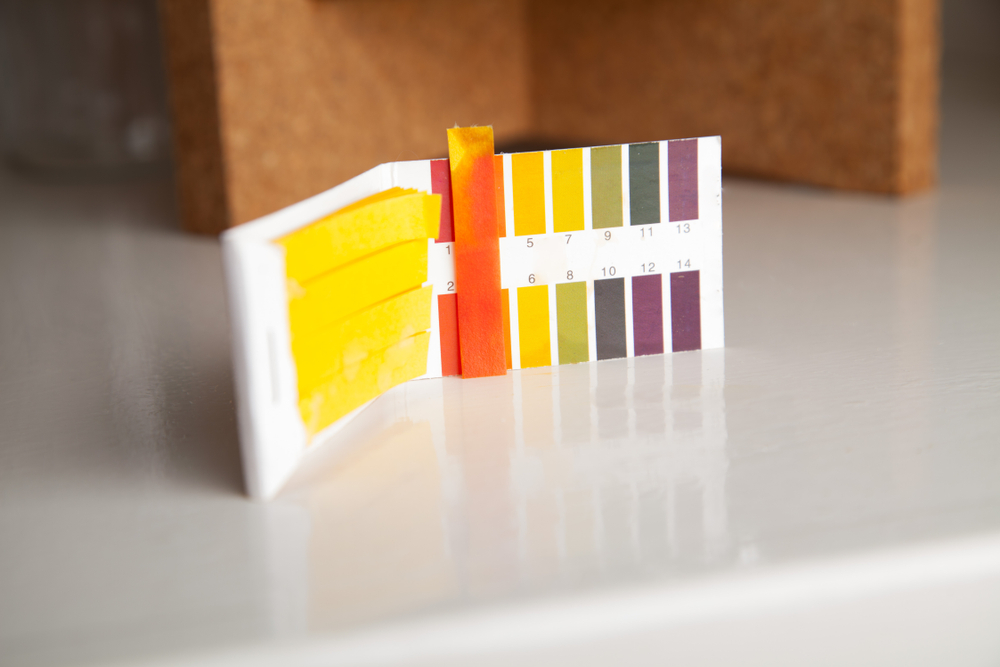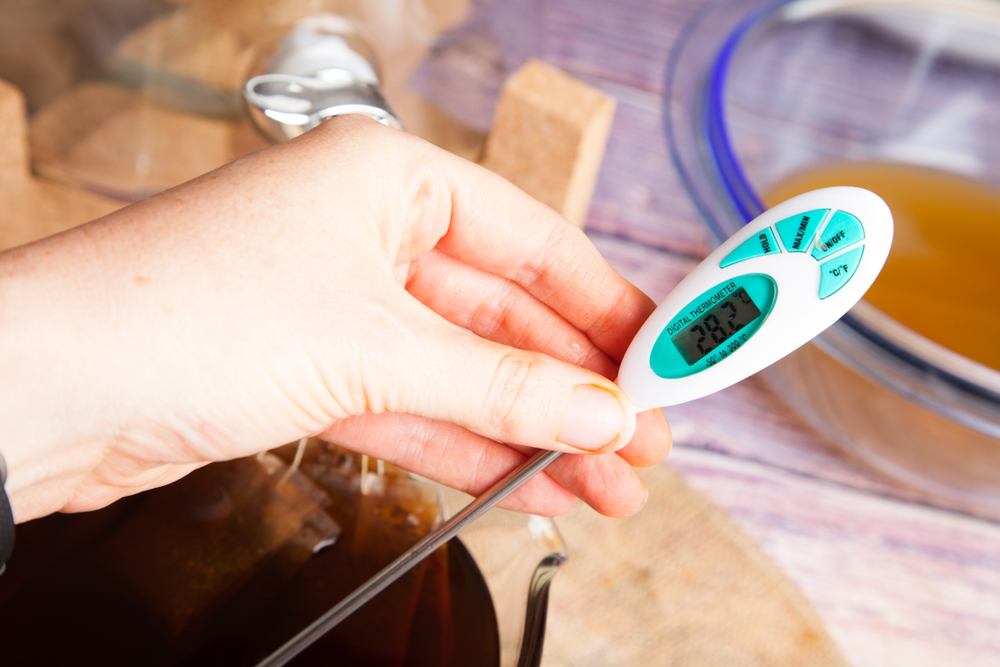Kombucha is a fermented beverage with fluctuating pH levels, constantly changing due to the dynamic relationship between the drink's acids and bacteria. The ideal pH level for kombucha is in the middle of the acidic range, resting between 3.0 to 3.5.
Table of Contents
What Is the Optimal pH Level for Kombucha Tea?
Kombucha is naturally an acidic drink but requires a specific pH range for its carbonation and flavor. Ready-to-drink kombucha tea’s optimal pH level is anywhere between 3.0 to 3.5.
If your kombucha tea falls below a 3.0 pH level, the taste will resemble a tarter, more vinegary concoction.
On the opposite end, if the pH level of your kombucha is higher than 4.5 (which is the starting pH), you could contaminate your fermentation with foreign pathogens. This is because a pH level that high can be a breeding ground for these harmful microbes. Moreover, it may not be as deliciously effervescent as a kombucha tea brewed in its ideal pH range.
If your kombucha is at the perfect pH of between 3.0 to 3.5, it will boast a light vinegar taste and an exquisite hint of sweetness.
How to Test the pH of Kombucha
Unless you’re an experienced kombucha enthusiast, a simple taste test won’t be enough to measure your kombucha’s pH levels accurately. You’ll need the exact numbers to ensure the entire batch is healthy.
Testing the pH level of kombucha can be done in two ways: a paper strip test and a pocket meter test.
Paper strip tests
PH test strips are one of the best tools to get a pH reading for your kombucha brew.
To start, pour some of the kombucha into a beaker or container. Dip the paper strip into the mixture. It will then change color. Compare that color to the color chart that comes with the paper strips, and from there, you can determine the pH reading of your batch of kombucha.

Pocket pH meter tests
The handheld pocket pH meter provides an even more accurate result. Instead of paper strips, you’re using a handheld device specifically built to read the pH level of liquid solutions.
All you have to do is place the probe in the kombucha, and once the meter flashes, you can take it out and check the results. This meter will display a pH reading of your brew.

Is It Always Necessary to Test the pH of Homebrewed Kombucha?
We wouldn’t go so far as to say that pH testing kombucha is a mandatory step. Still, pH testing makes quality checking your kombucha significantly easier, especially if you’re brewing for the first time.
If you already have pH-checking equipment, we highly encourage you to use them to test your kombucha’s pH levels. If not, you can easily find pH testers online.
There are two specific times when you should check your homebrewed kombucha.
- The first is during the first fermentation, particularly right after you pour your starter tea and SCOBY into the sweetened black tea. You want the kombucha to stay below a pH of 4.5 to avoid potential contaminant growth. If it reads higher, you’ll need to add more starter tea to make it more acidic.
- The second time you should use your pH reader is after the second fermentation, particularly before you decide to bottle and drink it. As mentioned, a pH reading of 3.0 and 3.5 is the best for a sweet and deliciously sour taste. Any higher or lower figure means you must adjust in the fermenting process.
Is More Acidic Kombucha Better for You?
Yes. As the acidic levels of kombucha rise during the fermentation process, its advantages also rise.
This acidity helps the body in many ways, such as:
- Reduces inflammation
- Reduces high blood pressure
- Supports weight loss
- Eliminates harmful bacteria
- Improves gut health
The average kombucha serving contains small amounts of acetic acid, about 1.55 grams per liter. This is less apple cider vinegar but more than most drinks.
Acid is present in kombucha in the first place because of the presence of SCOBY and bacteria in the liquid solution. The SCOBY feeds off the sugar from the sweetened tea and slowly transforms it into ethanol alcohol. The bacteria then eat the alcohol and make the drink more acidic.
The longer kombucha ferments, the more acid gets released into the drink. But of course, to make the drink more palatable, you’ll have to move it out of the fermentation process at some point to retain some of its sweetness.
How to Raise the pH in Your Kombucha
To raise your kombucha’s pH levels closer to the alkaline scale, you can do either of the following:
- Neutralize the flavor by adding more sugar or sweet juices like fruit juice, sweet tea, or honey.
- Scrap the batch and use it as a starter liquid. Make new kombucha using a fresh batch of sweetened tea.
A low acidity level means that your homebrew kombucha is matured. This type of kombucha tastes tart and vinegary. If the taste isn’t your liking, you can keep that first batch and use it as a mother batch for the following homemade kombucha brews.
How to Lower the pH in Your Kombucha
A low pH will give your booch a more sour and acidic flavor. To lower its pH value, do either of the following:
- Add more starter tea to the kombucha and stir.
- Add some white vinegar to the kombucha and stir.*
But before anything else, be sure first to verify the kombucha’s freshness.
If the acidity is too low, pathogens and mold may have already started accumulating, rendering the batch useless. If that’s the case, don’t be afraid to start over and pour in a more potent batch of starter tea and SCOBY for next time.
*Many brewers are against adding vinegar because it can weaken your SCOBY. If you must add vinegar, do not do it often.

